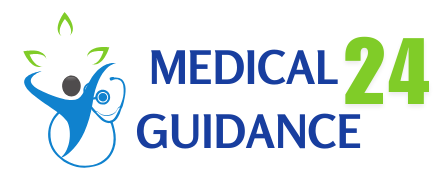Practical Strategies that Teachers May Use to Support Learners to Cope with Anxiety During Examination

On this page, we discuss the practical strategies that teachers may use to support learners to cope with anxiety during examination. Exam anxiety is an emotional state that many students experience, characterized by excessive worry, nervousness, and fear of failure. This heightened stress can significantly impact a student’s ability to perform well and can even lead to more severe health issues if not addressed. Teachers play a critical role in helping students manage this anxiety, especially since they are in a unique position to observe, understand, and mitigate its effects. This article aims to explore various practical strategies that teachers can employ to support their students in coping with this form of anxiety.
Practical Strategies that Teachers May Use to Support Learners to Cope with Anxiety During Examination
Practical strategies that teachers may use to help students cope with exam anxiety include creating a positive and stress-free classroom environment leading up to the exams. Teachers can provide study aids and preparatory materials to ensure students feel well-equipped to tackle the subject matter. Holding review sessions and mock exams can help familiarize students with the exam format and timing, thereby reducing the fear of the unknown. During the exam itself, teachers can provide clear instructions and offer time-management tips, along with walking around the room to offer silent moral support. For lengthier exams, incorporating short “mindfulness moments” for breathing exercises or quick stretches can also be beneficial. After the exam, teachers can encourage students to review and reflect on their performance, offer constructive feedback, and even hold emotional check-ins to discuss how they felt. These comprehensive strategies aim to reduce anxiety by addressing both the academic and emotional aspects of exam preparation and execution.
I. Understanding the Roots of Exam Anxiety
Before any targeted intervention can occur, it is crucial for teachers to recognize the signs and symptoms of exam anxiety. These may manifest as physical symptoms like sweating and shaking, emotional symptoms like irritability and depression, and cognitive symptoms such as concentration problems and negative thought patterns. Understanding the underlying causes—whether they stem from fear of failure, pressure from parents, or past experiences—enables the teacher to tailor coping strategies to the individual needs of each student.
II. Fostering a Positive Classroom Environment
A. Emotional Safety
One of the first steps in helping students manage their anxiety is to create an emotionally safe classroom environment. Emotional safety can be fostered through open communication, wherein the teacher actively listens to students’ concerns and provides non-judgmental feedback. An emotionally safe environment enables students to express their fears and anxieties freely, making it easier to address these concerns head-on.
B. Cognitive Reinforcement
In addition to emotional safety, teachers can employ cognitive reinforcement strategies. This can include using positive affirmations, celebrating small wins, and building self-esteem through constructive feedback. Teachers can make a habit of starting each class with a positive thought or affirmation, thereby creating a culture of positivity that can help alleviate stress and anxiety.
III. Pre-Exam Preparation Techniques
A. Time Management Skills
Poor time management can exacerbate exam anxiety. Teachers can help students develop better time management skills by breaking down study materials into manageable parts and creating a study schedule. Emphasizing the importance of consistent, regular revision as opposed to last-minute cramming can go a long way in reducing pre-exam stress.
B. Study Groups
Peer-to-peer learning can serve as a powerful tool for reducing anxiety. Teachers can facilitate this by organizing study groups where students can review material together. These group settings provide emotional support and can help clarify any confusion, leading to a more in-depth understanding of the subject matter.
C. Mock Exams
Another effective strategy is to conduct mock exams that simulate the actual exam experience. Mock exams can serve multiple functions: they give students an idea of what to expect, help identify areas that need improvement, and offer a low-stakes environment to practice time management and coping strategies.




IV. Mindfulness and Relaxation Techniques
A. Breathing Exercises
Simple breathing exercises can be incredibly effective in reducing anxiety. Teachers can guide students through deep breathing or the 4-7-8 technique (inhale for 4 seconds, hold the breath for 7 seconds, exhale for 8 seconds) to help calm their nerves before an exam.
B. Mindfulness Meditation
Mindfulness meditation has gained significant attention for its efficacy in reducing stress. Teachers can introduce short mindfulness exercises at the beginning or end of a class to help students become aware of their thoughts and feelings, thereby making it easier to manage anxiety.
C. Physical Exercise
Physical activity releases endorphins, which act as natural mood lifters. Teachers can incorporate short physical exercises or even just a few minutes of stretching in the classroom to help alleviate anxiety.
V. During-Exam Strategies
A. Structured Exam Guidelines
Teachers can provide clear instructions and time-management suggestions at the start of the exam. This guidance can help students pace themselves better and reduce uncertainty, which is often a significant source of anxiety.
B. Supportive Presence
Sometimes the mere presence of a supportive authority figure can alleviate anxiety. Teachers can walk around the classroom during exams to offer silent moral support, making themselves available for any urgent queries or clarification.
C. Mindfulness Moments
For longer exams, incorporating short breaks where students can close their eyes, stretch, or do quick breathing exercises can be beneficial. These “mindfulness moments” can act as a mental reset, helping students focus better and reduce anxiety.
VI. Post-Exam Follow-Up
A. Review and Reflection
Once the exam is over, taking the time to go over the questions can offer students valuable insights into their performance. This review is an opportunity to praise what they did well and constructively discuss areas for improvement, thereby reducing anxiety for future exams.
B. Emotional Check-in
After the exam, a brief emotional check-in can go a long way. Teachers can ask students how they felt during the test, what strategies worked for them, and what didn’t. This feedback is invaluable for adapting and customizing future support.
VII. Involving Parents and Caregivers
While teachers play a crucial role in managing exam anxiety, the support of parents and caregivers is equally important. Teachers can conduct meetings or workshops to educate parents about the signs of exam anxiety and how they can contribute to creating a stress-free study environment at home.
VIII. Professional Help
In extreme cases where the anxiety becomes unmanageable and starts affecting the student’s health and performance, teachers should recommend professional psychological support. Early intervention can prevent the condition from escalating and causing long-term damage.
Conclusion
Exam anxiety is a multifaceted issue requiring a holistic approach for effective management. By fostering a positive classroom environment, equipping students with practical study and relaxation techniques, and involving parents and caregivers, teachers can significantly help reduce the impact of this form of anxiety. Though every student is different and there’s no one-size-fits-all solution, the strategies outlined in this article serve as a comprehensive guide for teachers aiming to support their students in the best way possible.








